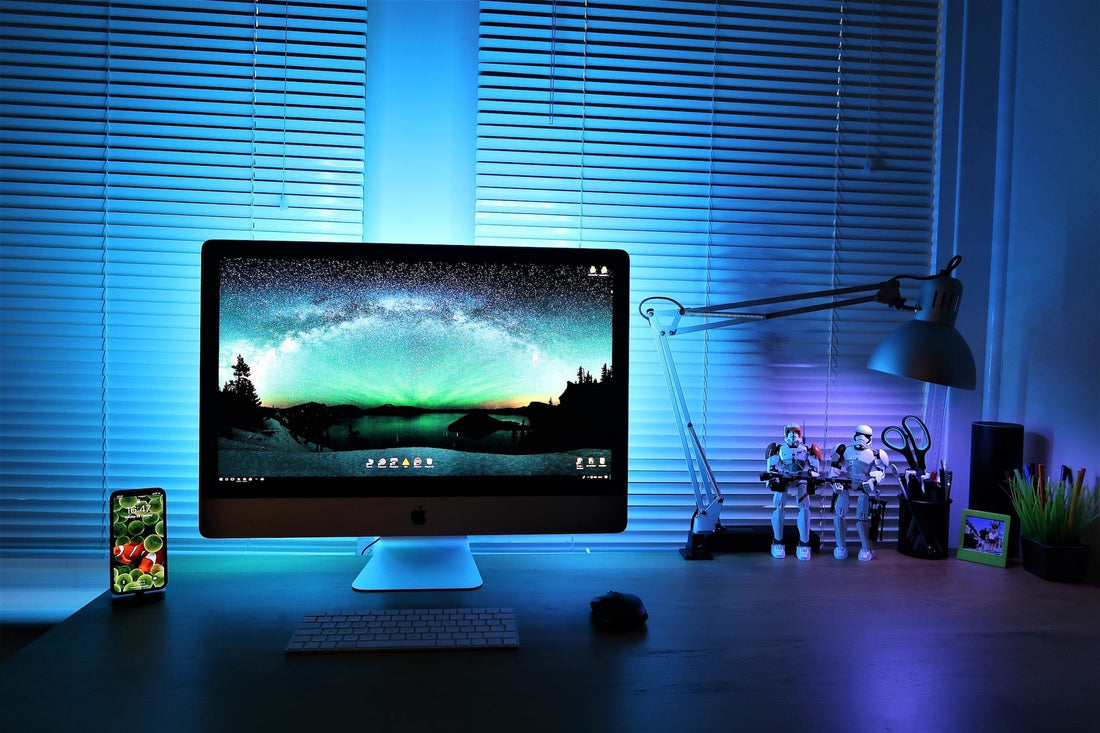All functions in our body do not occur without a reason.
All functions are constantly changing and require timely interaction to function properly.
The most important change in the environment is the regular shift between light and dark.

Therefore, the body follows these changes and has developed a time cycle to functions of the body, allowing us to survive and function in various environments.
This cycle is called “circadian rhythm.”
In Latin, circadian rhythm means “about a day.”

Above all, it is responsible for the production of melatonin, which is essential for sleep quality, damage repair, and recovery ability after strenuous exercise.
For billions of years, the Sun has been the only light source capable of stimulating our circadian rhythms.

Then, before we learned about circadian rhythm, the light bulb was invented to allow people work more hours.
Over time, artificial light has evolved to make human body feel more awake and alert in the evening by adding wavelengths of blue light, a component of white light that affects circadian rhythm.

As humans began to be exposed to more and more blue light, this began to affect circadian rhythm.
Exposure to blue light wavelengths at night has a negative effect on melatonin secretion, which prevents us from falling into a deep sleep. It also makes you feel more tired and less energetic during the day and promotes aging.
The most harmful thing of all is that these diseases are all fundamentally caused by artificial blue light exposure at night.

All these causes starts with disrupting the rhythm that controls our biological changes.
With research showing the dangers of exposure to artificial light, we have two options.
1. Escape into the wild and give up the convenience and stability of the modern lifestyle for which our ancestors worked so hard .
2.Use this knowledge intelligently to maintain a healthy circadian rhythm in modern society.

So how can we achieve these circadian rhythm-friendly practices?
1. Just like our ancestors did, wake up at sunrise and make it a priority to go outdoors and receive sunlight.
If possible, watch the sun rise in person. By starting your day with natural, beneficial light, you can get your circadian rhythm right and get one step closer to optimal health.
2. Spend as much time as possible outdoors during the day.
Exposing your eyes and body to the full spectrum of solar rays essential to the circadian rhythm, whether in the shade or in direct sunlight, you provide your body with a variety of biological virtuous processes. For people in occupations where this practice is not easy, sitting next to an open window can be a good alternative.
Closed windows filter out much of the red, infrared and near infrared wavelengths, which are the most healing rays of sunlight, and serve to balance the high-energy blue and ultraviolet wavelengths.
In other words, receiving sunlight through a closed window is a distorted ray that deviates from the full spectrum of sunlight, so it is difficult to expect the desired effect and, in fact, has a harmful effect.

Therefore, when we inevitably have to stay indoors during the day, we need Day lenses to protect our bodies from artificial lighting and LED fluorescent lights, which stress the body and cause great harm to health.

As night comes and the sun sets, you should wear Night lenses to synchronize your circadian rhythm with rhythm of nature and protect your sleep by minimizing exposure to the harmful blue light that all modern lighting, especially screen devices.

Day lenses block 95% of artificial blue light.
Night lenses block 100% of artificial blue light and green light.
So the next question you may ask would be “Why LUCIER glasses and not products from other cheaper brands?"
Here's why:
Most blue light blockers on the market don't sufficiently block the most harmful wavelengths of blue light.
In particular, glasses with transparent lenses uses the word “blue light” as a marketing goal, but it is difficult to expect any real effect.
Blue light contains a wide wavelength of approximately 400 to 500 nanometers (nm).
All blue light at this wavelength has been proven to be harmful to circadian rhythm and health when it comes from artificial light or not from a full-spectrum light source like the sun.
Most companies that make “blue light” blocking glasses do not change the color of the lenses because they believe that customers will not want to wear colored lenses.
However, when a lens is clear, it means that the visible rays passing through it do not change.

Most “blue light” lenses in the market are completely transparent lenses with only a shiny blue anti-reflective coating.

These lenses can generally block blue light up to 420 nm, but not up to 460 nm, which is the most harmful range emitted by modern lighting and screen devices.
Studies have shown that blocking light lower than the range between 400 and 460 nm is not an acceptable compromise for optimal health, so the effectiveness of clear blue light glasses is disappointingly insufficient!
“A half truth leads to a full lie”
-Benjamin Franklin

If you begin to deeply understand the principles of sunlight and nature, you can realize that, if you break down and artificially imitate nature, it will usually cause bigger problems.
LUCIER will do our best to help you regain optimal health through complete solutions rather than providing distorted information.

Sources:
https://pubmed.ncbi.nlm.nih.gov/28585194/






